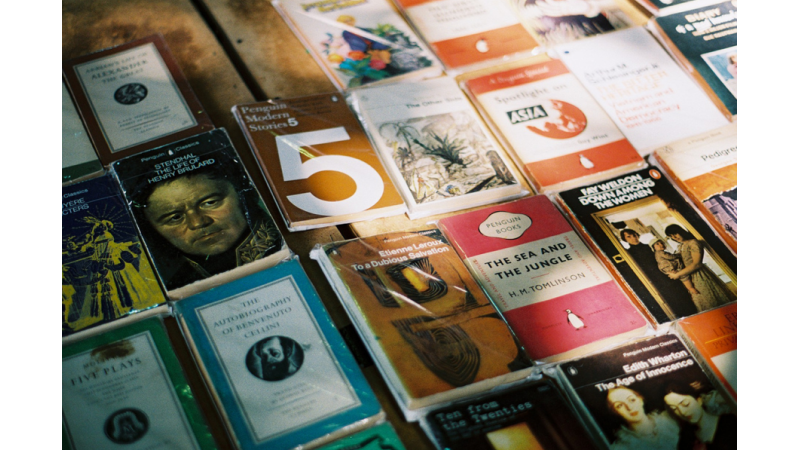 Today is Paperback Book Day, and in addition to hosting a little giveaway on Facebook, I wanted to share some links about the history of paperbacks. Who knew it was so interesting?!
Today is Paperback Book Day, and in addition to hosting a little giveaway on Facebook, I wanted to share some links about the history of paperbacks. Who knew it was so interesting?!
After a few false starts throughout history, paperbacks as we know them today—portable, soft-covered, reasonably priced—didn't take off until just before World War 2. And we can thank the Brits for that! See, in the 1930s a fellow named Allen Lane, who worked at a publishing house in England, was worried about business costs. He browsed a shop at a train station and only found magazines and low-quality "pulp" novels. As the Smithsonian notes in their piece about him, an idea struck: why couldn't high-quality fiction be published in paperback at a cheaper price? It could, of course. He launched the Penguin imprint and soon the trend spread to the US.
What's important to remember is the cost of books at the time was prohibitive for most people. As MentalFloss notes: "In 1939, gas cost 10 cents a gallon at the pump. A movie ticket set you back 20 cents. John Steinbeck’s The Grapes of Wrath, the year’s bestselling hardcover book, was $2.75. For a nation suffering 20 percent unemployment, books were an impossible expense."
By the 1950s, companies were producing paperback originals in addition to just reprinting classic novels in softcover. Eventually, booksellers got on board...and so an industry was born. These days, there are varieties, like trade paperbacks and mass market paperbacks, and most of us find it hard to imagine a time when we couldn't slip a book in our back pockets or purses and head to the park or the beach or the backyard for a bit of reading time.
Check out these articles for more about the rise of the paperback book:
- How paperbacks transformed the way Americans read from MentalFloss
- How the paperback novel changed American literature from Smithsonian
Today, read a paperback in celebration!



